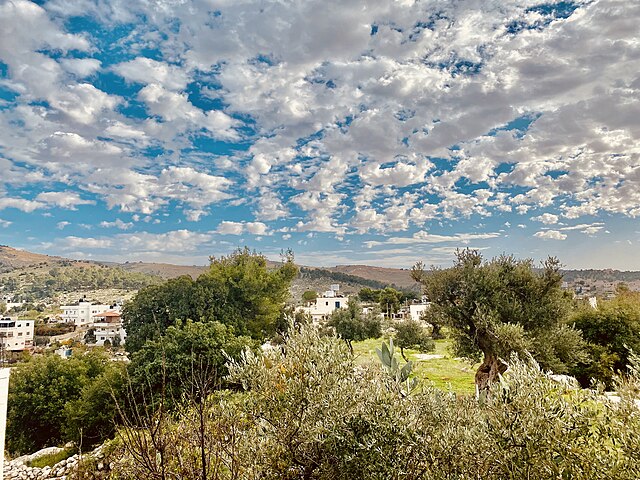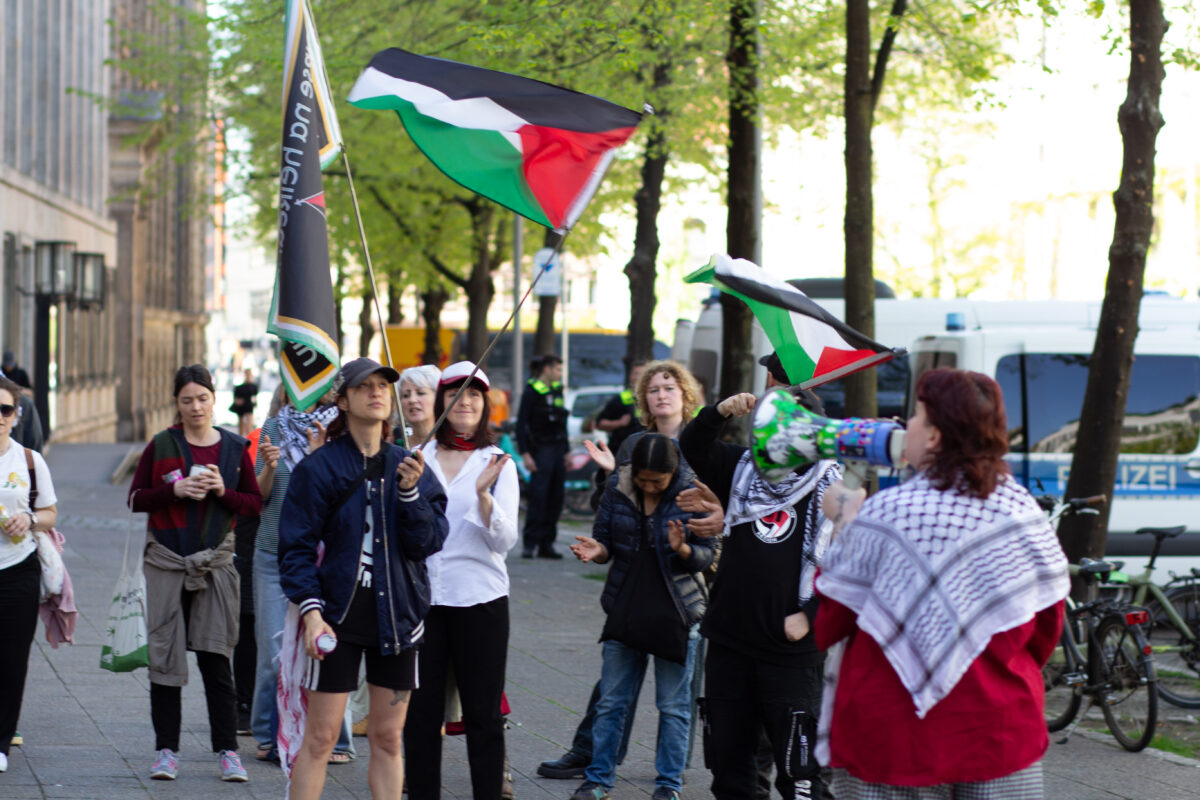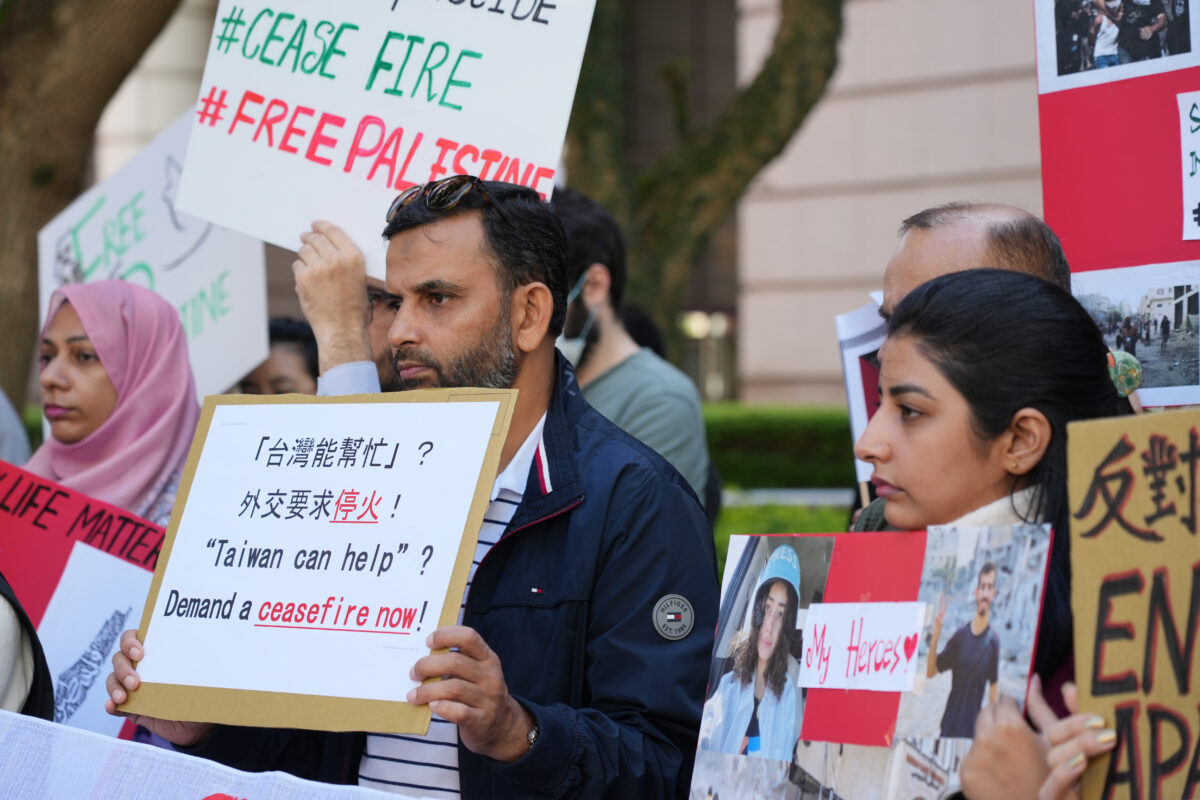I’ve sat countless times in meetings of environmental groups, while people discussed how to attract a more diverse range of people to become active in advocating for climate policy. Many groups, which tend towards white and middle or upperclass, find that they have trouble connecting with other activists, despite the fact that the existential threat of climate change is intimately involved with nearly every other struggle. I’ve also heard some of the reasons for this disconnect from activists in other areas; the issue of the climate isn’t as urgent as others, or that they don’t feel as welcome in such homogenous spaces. And another, less palatable one: that climate activists are too often single issue, making the lack of intersectionality alienating.
…Israel’s relentless bombardment of Gaza has “produced more planet-warming gases than 20 climate-vulnerable nations do in a year.”
A lot of the overlap between climate topics and other struggles is nuanced. It’s not always easy to connect things like poorer health and life expectancy in underserved communities to the food system, or heat deaths to urban planning that favors some neighborhoods over others. As a giant monolith of a topic, climate change can often seem pretty invisible. But one area where the connection cannot be ignored is war, and specifically Israel’s genocide of Palestinians. Surprisingly (or maybe not?), many climate activists are trying their very hardest to do exactly that.
Every step of conflict generates greenhouse gas emissions. Weapons need to be manufactured, which uses energy and also carbon-intensive materials. They need to be transported from one place to another, which is done via jets burning heavy fuel, or ships, which release not only carbon dioxide but also sulfur into the atmosphere – a cause of acid rain. Then there is the cost of transporting and housing troops, which again includes transport plus electricity, food, and clothing. Bombs and other weapons cause fire, smoke, and create rubble, resulting in a massive carbon explosion. Watching a video of a bomb detonating, you can literally see the black smoke rising into the air to obscure the sun. Even coal power plants don’t look that bad.
According to data shared with The Guardian, Israel’s relentless bombardment of Gaza has “produced more planet-warming gases than 20 climate-vulnerable nations do in a year.” That’s equivalent to 150,000 tonnes of coal and was “probably a significant underestimate.” The article was also written in January, so that figure has no doubt risen significantly in the time since then. And these kinds of figures are just the ones that we know. What we don’t know is how much greenhouse gas comes from militaries around the world because governments refuse to say, citing national security. One researcher has estimated that the U.S. military “contributes more greenhouse gas emissions than over 150 countries.” This report on the carbon footprint of EU militaries had to extrapolate much of the data, and notes that “no EU militaries attempt to report on the GHG emissions related to weapons use on the battlefield.”
And besides the catastrophic loss of human life from this genocide, apartments, schools, and other structures are also being flattened to the ground. These are made mostly of concrete, and are greenhouse gas bombs themselves. They release plant-warming gasses both when they are destroyed and when they’ll need to be rebuilt in the future. To put how much of an impact buildings have on the planet in context, the construction industry is responsible for around one third of global emissions (33%) – more than transportation (24%) and agriculture (21%). The U.N. estimates that rebuilding all the destroyed homes in Gaza could take 80 years. Between the (underestimated) emissions from active war, and the future emissions from rebuilding alone, every climate activist should be doing everything they can for Palestine.
But the deep connection between Palestinian liberation and climate advocacy didn’t start on October 7th – Israel’s occupation of Palestine has always been a climate issue. Back in 2002 the situation had gotten so severe that the UNEP was asked to undertake an in depth study on environmental issues in Palestine. Klaus Töpfer, then Director of the UNEP, wrote in the foreword that “the deepening crisis and the human suffering in the region cannot be neglected and the international community should do its utmost to assist those who are affected. The peaceful end of the occupation and cessation of all violence must be the ultimate objective. Environmental cooperation can be a tool in the peace process.”
A main environmental issue in occupied Palestine that has only worsened over the last months is water contamination, both of the groundwater and the ocean. Israel controls all of the water supply, leaving the Palestinians to pump groundwater, drawing from sensitive aquifers in the area. The overdrawing of groundwater is a concern in itself, but this has historically been compounded by heavy, often illegal use of pesticides and fertilizers in the West Bank, which run into the Palestinian water supply and contaminate it. In such an arid area of the world, this isn’t only bad for people, but also native plants and animals who rely on the scarce water to survive. Adequate waste facilities aren’t supplied to Palestinians, and treatment plants are often overloaded, flowing into the ocean. It’s also been reported that Israeli settlers discharge wastewater onto Palestinian land or into the ocean. With the escalation of Israel’s assault on Gaza, chemicals from weapons and illegal white phosphorus have also made it into water, and Israel has cut off the water supply entirely. The remaining water is so contaminated that many are being forced to drink seawater, or from puddles, and it’s not known when the aquifers will recover.
Another existing issue that has been made exponentially worse over the past months is that of waste. The Palestinian trash collecting system suffers near-constant disruption because of changing Israeli checkpoints, and closing off of various areas to Palestinians and Palestinian vehicles. This has routinely led to dump sites being created outside of managed landfills, which leak methane, a greenhouse gas over 28 times as potent as carbon dioxide. Even worse, because of the lack of infrastructure and disruptions, trash is also burned, which releases toxic chemicals into the air. The recent destruction of buildings in Gaza has created an unimaginable amount of rubble and other waste, and these underlying problems mean there’s nowhere for it to go.
But perhaps the most devastating impact to the environment in Palestine has been to the region’s biodiversity. Water pollution and that from landfills has major effects on plant and animal species, which are under threat in occupied Palestine. Israel also routinely clears large areas for security purposes, destroying native trees and shrubs, and flattening the land. It also limits Palestinians’ access to the ocean, which means that the area near the shore is heavily overfished. And as native people, Palestinians have developed plant species to cultivate for food over generations that are suited to the region. One of those species is olive trees, whose oil has formed a significant part of the Palestinian economy and culture. Some of the trees are centuries older than the Israeli occupation. Because of checkpoints, many farmers have long had troubles tending to their farms, meaning the loss of the trees, along with heritage varieties of fruits and vegetables. Israelis also routinely uproots and destroys the trees, sometimes thousands at a time. This has only increased since October 7th, with the FAO and UN estimating that over one third of agricultural land in Gaza has been destroyed.
There aren’t many cases where the connections between a liberation struggle and the climate are clearer: Palestinian liberation is intimately connected to the environment, not only within Palestine, but also with repercussions extending far beyond it. Those in the climate movement have the chance to deepen the solidarity with other struggles, and to make the push for environmental protection more intersectional. Even though they’ve gotten massive pushback, some like Elisa Bas and Greta Thunberg, have already done so. But more is needed, especially within Germany, where climate activists mostly remain silent. But to care about the environment, and especially to call oneself a climate activist, goes hand in hand with support for Palestine.




